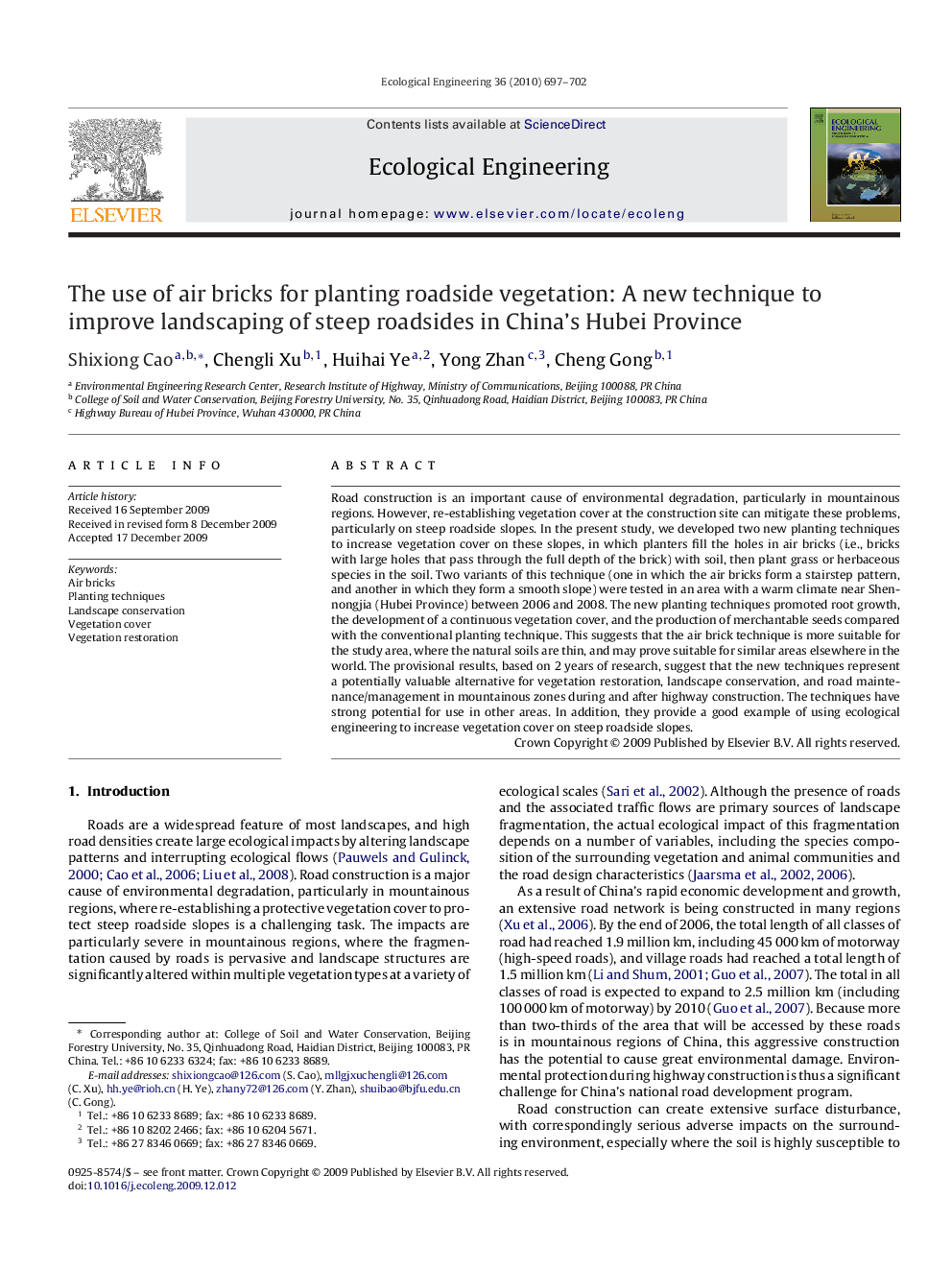ترجمه فارسی عنوان مقاله
استفاده از آجر هوا برای پوشش گیاهی کاشت کنار جاده ای: یک تکنیک جدید برای بهبود محوطه سازی در کنار جاده های شیب دار در استان هوبئی چین
عنوان انگلیسی
The use of air bricks for planting roadside vegetation: A new technique to improve landscaping of steep roadsides in China's Hubei Province
| کد مقاله | سال انتشار | تعداد صفحات مقاله انگلیسی |
|---|---|---|
| 63122 | 2010 | 6 صفحه PDF |
منبع

Publisher : Elsevier - Science Direct (الزویر - ساینس دایرکت)
Journal : Ecological Engineering, Volume 36, Issue 5, May 2010, Pages 697–702
ترجمه کلمات کلیدی
آجر هوا؛ تکنیک های کاشت - حفاظت از چشم انداز؛ پوشش گیاهی؛ ترمیم پوشش گیاهی
کلمات کلیدی انگلیسی
Air bricks; Planting techniques; Landscape conservation; Vegetation cover; Vegetation restoration

